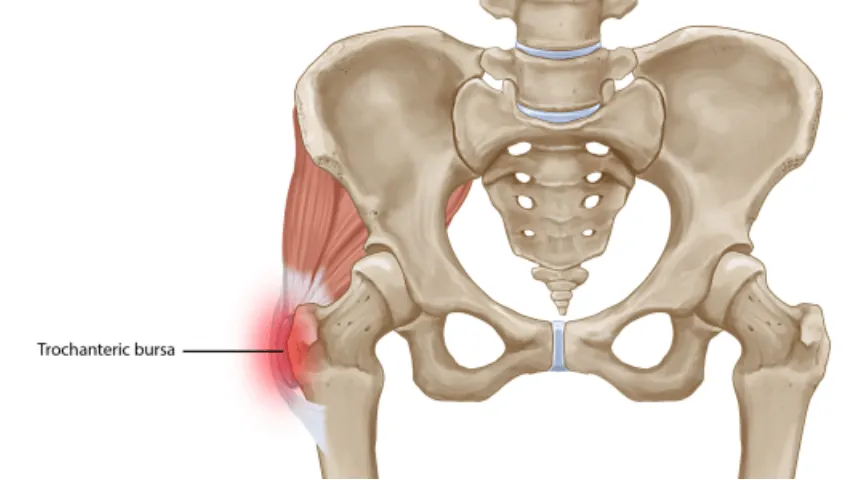A common injury we see presenting to the clinic is pain on the side of the hips – commonly referred to as hip bursitis over the years. The name has changed over time, from hip bursitis, trochanteric bursitis to now commonly referred to as gluteal tendinopathy. Our understanding of the tissues involved has also evolved, which I will go into further detail below.
Often the most common complaints is that it hurts to sleep on the involved side – and thus causes a lot of interrupted sleep. The bursa that sits on the side of the hip is often blamed, though this is now known to not be the main cause – rather it is a symptom. The main pathology is the tendon of the gluteal muscle – which sits on top of the bursa – it is weak. As a result, the tendon thickens and pain generators are active – causing the tendon to become sensitised.
Gluteal tendinopathy is more common in women than men, especially after menopause. It can also affect people who do activities that involve a lot of running, jumping, or twisting of the hips. Some of the symptoms of gluteal tendinopathy include:
- Pain on the side of your hip that may radiate down your leg
- Difficulty sleeping on the affected side
- Difficulty walking, climbing stairs, or getting in and out of a car
- Reduced range of motion of your hip joint
What causes It?
The main cause is overloading or too much compression of the tendon. This can happen when you:
- Stretch your hip too much or too often – across your midline
- Cross your legs when sitting or lying down
- Stand with your hip tilted to one side
- Wear shoes that are too high or too low
The interesting thing about gluteal tendinopathy is that you can do these things for years and you will have no symptoms. Although there could be a time when the tendon becomes fatigued – often due to an increase in activity over a short period of time and that can flare up the tendon.
How can it be treated?
The first thing we need to do is desensitise the tendon – that is stop irritating it! The number one thing to do is to stop stretching it! A lot of people think stretching the tendon will help, but this just irritates it. The next thing to do is stop the leg from crossing your midline – which means the tendon is not stretched or compressed.
Seeing a chiropractor can help by providing education and also:
- Hands on treatment to mobilise and manipulate your joints and soft tissues
- Exercise prescription to target your gluteal muscles and other supporting structures
- Advice on how to progress your activity level safely and gradually
Gluteal tendinopathy can be a chronic and debilitating condition, but it does not have to be. With proper management and care, you can reduce your pain, improve your function, and enjoy life again.
Call 99975773 to book in to see one of our chiropractors so we can fix your gluteal tendinopathy today!
Mitchell Roberts – Chiropractor

